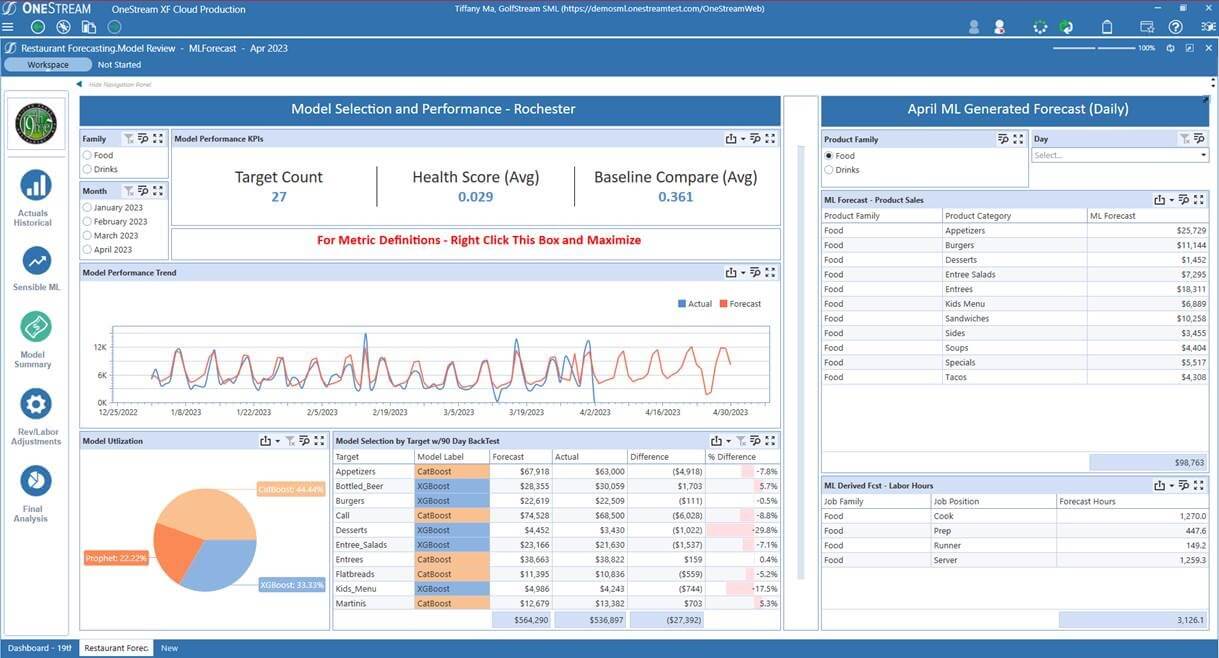Demand planning is mission critical for any organization because – when done well – projects the business growth potential by anticipating the expected demand to supply. That allows for optimizing inventories and rising customer satisfaction with better service. Traditionally, demand planning sits within Sales or Supply Chain organizations, supporting the S&OP process. But since it plays a key role in the core financial processes, forward-looking Finance leaders should be finding ways to unify demand planning with Finance.
With that in mind, this blog spells out the intersections between Finance and demand planning and describes the technology available to unify demand planning with financial processes.
Understanding Demand Planning
Demand planning is the first step within the demand management process (see Figure 1).

At its core, demand management represents an effort intended to match market needs with available resources. The demand management process often starts with a forecast analysis. That forecast is then enriched with inputs from Marketing, Sales, Product Development, Business Strategy and – of course – Finance to shape the demand plan. Customer orders (real demand) need to be managed and prioritized, that’s when the rubber hits the road. Finally, demand management is part of the S&OP or IBP process, an ongoing and collaborative process that ultimately helps the organization achieve better results and become more resilient.
The Value of Demand Planning for Finance
In many organizations, the relationship between the Office of Finance and demand planners is unrelated. But it shouldn’t be. Demand planners should get from Finance teams the top-down plans, financial objectives and budget figures to determine the aspiration and constraints. And – at the same time – demand forecasts can be of exceptional benefit for Finance teams.
In many ways, demand management directly or indirectly impacts the core financial processes. So why shouldn’t Finance teams benefit from using demand forecasts and plans as inputs? Those inputs can be used by Finance in many ways:
- Strategy Validation. Demand forecasts are a great way to validate strategy, especially when sales and financial objectives are too optimistic. Demand forecasts offers the Office of Finance an independent perspective built on market and business drivers.
- Financial Planning and Budgeting Accuracy. Demand plans feed marketing, sales and supply chain plans. Therefore it is a key input for planning and budgeting decisions around inventory levels, capex investments cash, spending and more.
- Profitability Analysis. Unifying the financial model with demand forecasting helps measure the P&L impact across the value chain.
- Reduced Bias. Some Finance teams feel obligated to create their own biased forecasts to meet top-down expectations and address margin and cash flow optimization pressure. Finance leaders can identify bias more easily when demand plans are incorporated into the financial planning and budgeting processes.
- Accurate Accounting. Demand plans offer a view of across a time horizon, helping controllers better predict cost, taxes and revenue allocations.
- More Credible Reporting. Finance teams can leverage the independent perspective that demand plans provide for both internal and statutory reporting. That ultimately adds credibility to financial statements.
Organizations that combine financial and demand planning can unlock the value laid out through the scenarios above (and others!). Rather than planning by siloes, organizations can take a systemic perspective to overall planning – to see the forest through the trees, so to speak.

A Unified Platform for Better xP&A
Unifying demand planning with Finance is one of the many advantages an xP&A solution brings.
According to Gartner, “by 2024, 70% of new financial planning and analysis projects will become extended planning and analysis (xP&A) projects, extending their scope beyond the finance domain into other areas of enterprise planning and analysis.” [1]
The Office of Finance can now benefit from new technologies that leverage financial and operational data with machine learning to realize the benefits outlined above. However, not every technology solution is the right fit to support a xP&A structure. Below are factors that Finance should consider when looking for a suitable technology:
- Unified Data Model. Not all solutions are technically ready to bring operational data at scale, so the solution must have a unified data model that caters to both financial and demand-related data.
- Data Management and Quality. The way the solution manages and ensures the quality and integrity in data is imperative to building one version of the truth and turning data into insights.
- Core Corporate Performance Management (CPM) Services. The solution must support the main needs of Finance teams. Having all CPM services in one platform enables strategy validation, planning and budgeting accuracy, profitability analysis, bias reduction, and more credible reporting.
- AI Services. The solution must deliver scalable AI capabilities for the Office of Finance and beyond. Machine learning in demand forecasting is helping organizations reach higher levels of forecasting accuracy (see Figure 2).

Conclusion
Finance leaders must consider demand planning as a powerful tool for driving better results. Why? Because it provides an independent view of the market. Only a single platform with a unified data model and machine learning capabilities can deliver the xP&A requirements to unify demand planning with Finance.
A good example of what’s possible is how Autoliv – a worldwide leader in car safety system – redesigned its core processes to unify consolidation, financial and operational planning to address market uncertainty. Autoliv now leverages machine learning in demand forecasting to increase granularity, reduce forecasting cycles (daily) and bring the cost down– something otherwise not possible without the use of artificial intelligence.
Learn more about how Autoliv leverages Sensible Machine Learning to improve financial and business results:
Get Started With a Personal Demo



